As a leisure and wellness journalist I often get the chance to visit some beautiful spas, both near and far. Overseas travel has been on hold for a while as I’ve been enjoying my first year of motherhood. As I gradually get back to more writing assignments, I’d like to share with you a few stories from past trips. It might be a memorable treatment at a boutique spa somewhere, or a trip to a medical wellness resort, or a little known yoga retreat. All good places to be.
Here’s a little piece from a trip to Morocco….
–––––––––––––––––––––––––––––––––––––––––––––––––––––––––––––––––––––––––––––––
Marrakech is a city of extremes, teaming with all forms of life, where five-star hotels, chic boutique riads and upmarket restaurants live side by side with fluorescent-lit neighbourhood cafes, scruffy streets and animated souks.
It’s also an assault on the senses, with pungent aromas wafting from backstreet spice shops, the scent of leather and rose water in the souks, and fabulous food smells rising up from the melting pot of stalls in the central square, which come to life each evening as the light fades across the city.
So after a few days of pounding the hot, dry streets, I could think of nothing better than immersing myself in a relaxing spa experience.
In Marrakech, there’s a spa for all budgets. If you only want to spend a few pounds you could visit a local hammam (public baths) – a popular neighbourhood meeting place, with separate times for men and women. Expect few frills – just a good hearty steam, scrub down and cleansing with local products. Heat is traditionally generated from wood-fired ovens often shared with the local bakery.
There are also many excellent mid-market standalone spa facilities around the city – primarily aimed at foreign visitors, but also increasingly attracting the middle classes of Marrakech. Here you can expect products of the highest quality and purity – many indigenous to the area – at prices still way below what you’d expect to pay at a European or North American spa.
If you choose to spa at one of the top hotels, you’ll no doubt have an amazing experience, but it will usually come with a heftier price tag to boot.
Local ingredients
Many Moroccan spa ingredients used today date from past centuries – for example savon noir (black soap made from olives) rhassoul (mineral clay found exclusively in Morocco at high altitude) and argan oil (a light, non-greasy oil from the crushed nut of fruit from the argan tree). Soothing mint, rosemary and eucalyptus are also found in abundance.
As specialist spa consultant Raoul Andrews, tells me: “Morocco is rich in indigenous plants and minerals which are used for wellness.
“Many are traditionally used by the nomadic Berber tribes from the south and are sought-after ingredients. For example, argan oil is used by the big international beauty companies for its anti-ageing properties, and the rose oil produced in Morocco is one of the best anywhere,” he says.
The spa: Les Bains de Marrakech
A short distance from the exotic Place Jemaa El Fna main square, you can find Les Bains de Marrakech. Tucked away at the end of a rose-coloured alleyway by the remparts, it’s a prime example of an authentically-designed and classy independent day spa.
Les Bains has been a labour of love for Moroccan owner Kader Boufraine, who for many years worked as a therapist near Paris before returning to his native Marrakech to build his spa.
For the interior décor he’s used many traditional techniques and finishes – from beautiful bejmat and zellige terracotta inlaid floor tiles, to ornate wall lamps that cast beautiful shadows on the natural tadelakt (polished plaster) walls.
There are thick cream woollen rugs (impractical but lovely) along the low-lit corridors which give a very cocooning effect, while dark chiffon curtains give veiled glimpses into hidden little areas. The hammam cabins and treatment rooms are arranged around a double-height covered courtyard, which serves as a tranquil relaxation area. Elsewhere, there is also a bar area opening onto an outdoor pool.
Our hammam treatment
At Les Bains de Marrakech my husband and I experienced a ‘duo traditionnel’ treatment of hammam and massage (45min hammam, one hour massage) which was interspersed with ample relaxation times, making it feel like a proper half-day experience.
First stop was the small hammam cabin where we were left to simmer on hot marble slabs under a vaulted ceiling until sweat was oozing out of our collective pores. Then in marched the two petite, black-clad ‘hammam girls’ ready to invigorate our pale, lifeless skin. First the traditional savon noir – a thick gelatinous paste made from olive oil by-products mixed with sweet-smelling eucalyptus oil – was smeared all over us. The aroma has the additional effect of opening the nasal passages, delivering a refreshing intake of oxygen.
Little did we know that this was the gentle, relaxing bit before the onslaught of the black glove (kessa). The girls rubbed and scrubbed our tired bodies with gusto until the outer layers of our skin were literally peeling off. There followed much dousing with warm buckets of water straight over our heads – which sometimes left me gasping for air – after which we were left alone again to broil a bit longer.
The finale was the soothing application of the rhassoul – Moroccan mineral clay – which was spread over our now super-smooth skin for around 10 minutes before yet another dousing and another steaming. We were then swaddled in fluffy white robes and left – feeling slightly light-headed – to ‘come round’ on day beds in the bright, covered inner courtyard. The serving of sweet mint tea tasted particularly good. A one-hour massage with argan oil awaited – which by that time almost seemed superfluous given our deeply relaxed and pummelled, post-hammam state.
[We were guests of Les Bains de Marrakech. All opinions are my own]. For more details, visit their website at: http://www.lesbainsdemarrakech.com
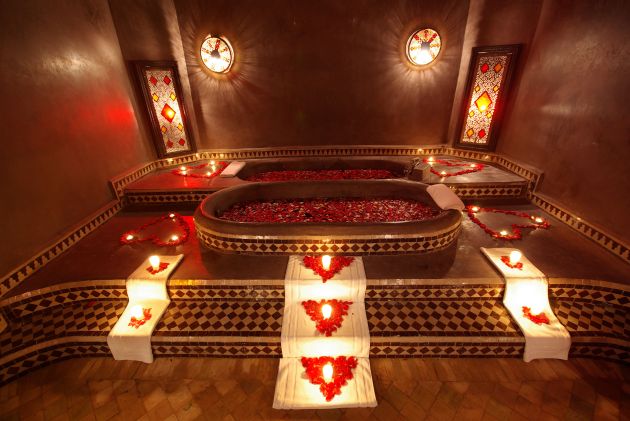

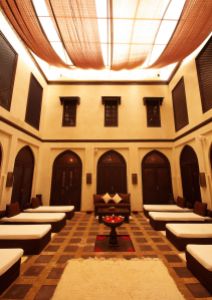
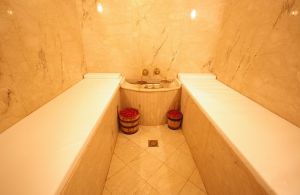

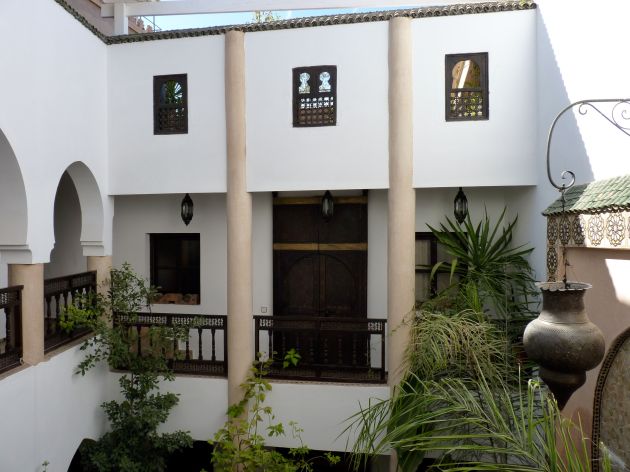
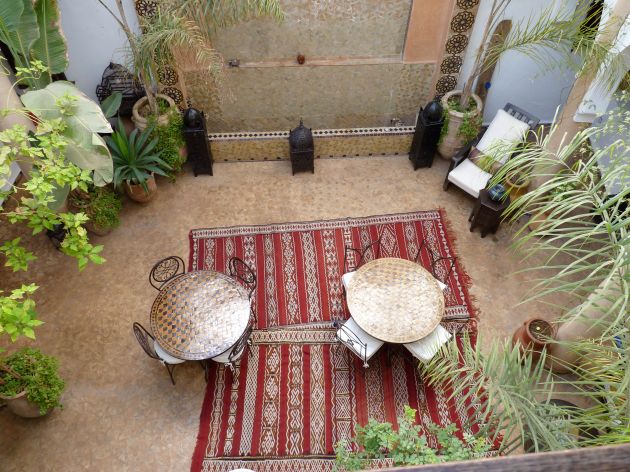




Lovely Jubly !!